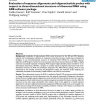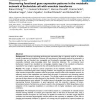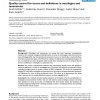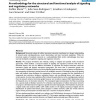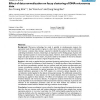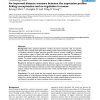BMCBI
2006
13 years 11 months ago
2006
Background: Expression array data are used to predict biological functions of uncharacterized genes by comparing their expression profiles to those of characterized genes. While b...
BMCBI
2006
13 years 11 months ago
2006
Background: Availability of high-resolution RNA crystal structures for the 30S and 50S ribosomal subunits and the subsequent validation of comparative secondary structure models h...
BMCBI
2006
13 years 11 months ago
2006
Background: Microarray technology produces gene expression data on a genomic scale for an endless variety of organisms and conditions. However, this vast amount of information nee...
BMCBI
2006
13 years 11 months ago
2006
Background: Ontologies and taxonomies are among the most important computational resources for molecular biology and bioinformatics. A series of recent papers has shown that the G...
BMCBI
2006
13 years 11 months ago
2006
Background: Structural analysis of cellular interaction networks contributes to a deeper understanding of network-wide interdependencies, causal relationships, and basic functiona...
BMCBI
2006
13 years 11 months ago
2006
Background: High-density microarray technology is increasingly applied to study gene expression levels on a large scale. Microarray experiments rely on several critical steps that...
BMCBI
2006
13 years 11 months ago
2006
Background: Microarray technology has made it possible to simultaneously measure the expression levels of large numbers of genes in a short time. Gene expression data is informati...
BMCBI
2006
13 years 11 months ago
2006
Background: Many statistical algorithms combine microarray expression data and genome sequence data to identify transcription factor binding motifs in the low eukaryotic genomes. ...
BMCBI
2006
13 years 11 months ago
2006
BMCBI
2006
13 years 11 months ago
2006
Background: Current methods of analyzing Affymetrix GeneChip

